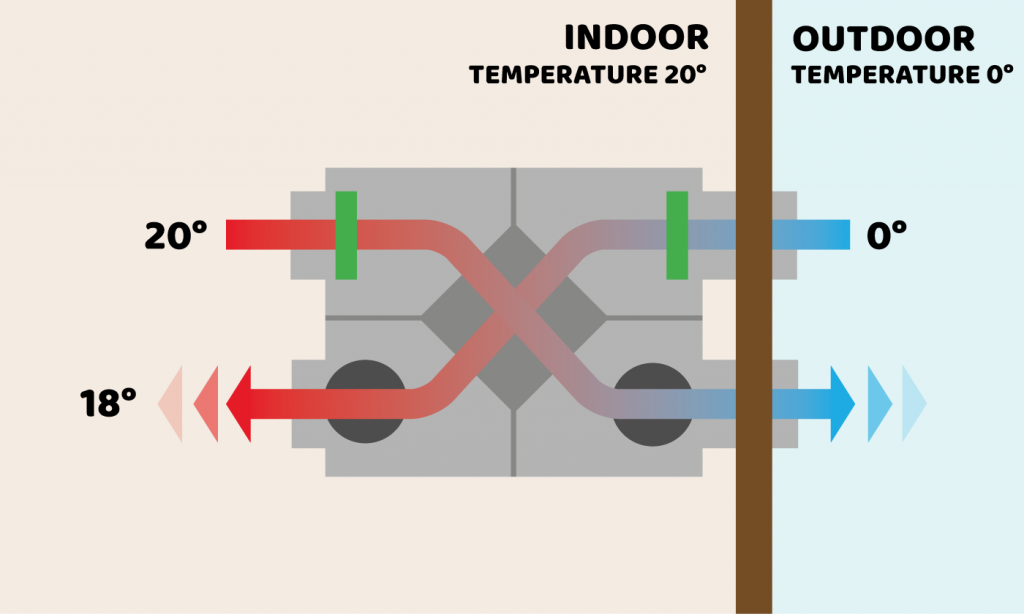HRV Buying Guide: What Features to Look For
Just How Heat Recovery Ventilation Boosts Indoor Air High Quality and Reduces Power Prices
Heat Recovery Ventilation (HRV) systems play an essential role in boosting indoor air top quality while concurrently reducing power expenses. By efficiently trading stagnant interior air with fresh exterior air, HRVs assist preserve perfect moisture and reduce pollutants. In addition, their capacity to recuperate heat from outbound air reduces the stress on heating and cooling down systems. As power expenses proceed to increase, understanding the full possibility of HRV systems ends up being significantly essential for home owners and businesses alike.
Understanding Heat Recovery Ventilation Solutions

Heat recovery ventilation (HRV) systems play an essential role in improving interior air top quality, especially in modern-day, energy-efficient buildings. These systems are made to transfer warm from the outgoing stagnant air to the inbound fresh air, therefore lessening energy loss while maintaining optimal temperature level levels inside. HRVs include a warmth exchanger, fans, and ductwork, helping with the constant blood circulation of air. By eliminating indoor pollutants and presenting fresh air, HRVs help to balance humidity levels, prevent mold growth, and decrease allergens. The efficiency of HRV systems depends on their capacity to recoup as much as 80% of the heat from the exhausted air, advertising energy conservation while making sure a healthy interior setting. Their combination is important in accomplishing sustainable living methods.
The Value of Indoor Air Quality
Indoor air quality (IAQ) is a vital aspect affecting the health and health of owners in any setting. Poor IAQ can lead to numerous health and wellness concerns, including respiratory problems, allergies, and fatigue. Additionally, it can aggravate status quo such as asthma. Aspects adding to low IAQ consist of contaminants from indoor resources like cleaning up representatives, mold and mildew, and insufficient ventilation. Preserving excellent IAQ is crucial for advertising a secure and comfy living or functioning space. Effective strategies to improve IAQ entail regular surveillance of air top quality, appropriate ventilation systems, and decreasing making use of dangerous substances inside. By prioritizing IAQ, individuals can assure a much healthier setting that cultivates performance and overall quality of life.
Energy Performance Benefits of HRV Equipments
Lots of home owners and building supervisors are progressively recognizing the power effectiveness advantages of heat recuperation air flow (HRV) systems. By transferring warm from exhausted indoor air to inbound fresh air, HRV systems noticeably reduce the power needed for home heating and cooling. This process reduces reliance on conventional HVAC systems, leading to lower energy costs. Additionally, HRVs assist maintain a well balanced indoor climate, avoiding excessive heating or cooling needs. The capability to recover as much as 90% of the warmth from outward bound air likewise supports sustainability initiatives by lowering total energy consumption. As a result, HRV systems add not just to set you back savings yet additionally to a reduced carbon footprint, lining up with the expanding focus on energy-efficient building techniques.
Installation and Maintenance Considerations
The effective execution of warmth healing air flow (HRV) systems calls for mindful factor to consider of setup and upkeep variables to assure peak performance. Correct positioning of the HRV device is essential, as it ought to be set up in an area that makes the most of air flow while minimizing noise disturbance. In addition, helpful hints ductwork should be appropriately sized and protected to stop energy loss. Routine maintenance, consisting of filter substitute and system cleaning, is crucial to protect optimum functionality and indoor air top quality. Owners should establish a normal maintenance timetable to determine and address prospective concerns before they intensify. Cooperation with knowledgeable specialists throughout both setup and maintenance stages can enhance the longevity and performance of HRV systems, ultimately resulting in additional reading better interior atmospheres and lowered power prices.
Real-World Applications and Success Stories
Checking out real-world applications of heat recuperation air flow (HRV) systems exposes their considerable influence on interior air high quality and energy effectiveness across different setups. In property buildings, house owners have reported better air high quality, leading to fewer allergies and breathing problems. Schools implementing HRV systems have noted improved trainee concentration and minimized absence because of much better ventilation. Industrial buildings, such as offices and retail spaces, have experienced lower power prices and increased employee productivity. For example, a company workplace in a temperate environment accomplished a 30% reduction in energy bills after installing an HRV system. These success tales show that HRV modern technology not only contributes to healthier atmospheres yet also provides concrete financial benefits, making it a valuable financial investment for different industries.
Frequently Asked Inquiries
Can HRV Solutions Decrease Irritants in Indoor Air?
The efficiency of HRV systems in minimizing indoor irritants mainly depends upon their ability to filter and exchange air. HRV Heat Recovery Ventilation. By continually replacing stale air, these systems can greatly decrease allergen degrees throughout indoor settings

Just How Does Moisture Affect HRV System Performance?
Humidity greatly affects HRV system performance; high degrees can cause condensation, decreasing efficiency, while reduced moisture may boost air exchange. Stabilizing humidity is vital for suitable operation and keeping interior air quality.
Are HRV Systems Noisy Throughout Operation?
HRV systems can generate differing noise degrees during procedure, depending on their design and installation. Some Visit This Link systems operate silently, while others may produce obvious noise, particularly at higher air flow setups or when improperly maintained.
What Is the Average Lifespan of an HRV System?

Can HRV Equipments Be Made Use Of in All Environments?
HRV systems can be made use of in numerous environments, but their effectiveness may differ - HRV Heat Recovery Ventilation. In severe temperature levels, changes or supplemental systems could be necessary to guarantee perfect performance and comfort while keeping interior air top quality